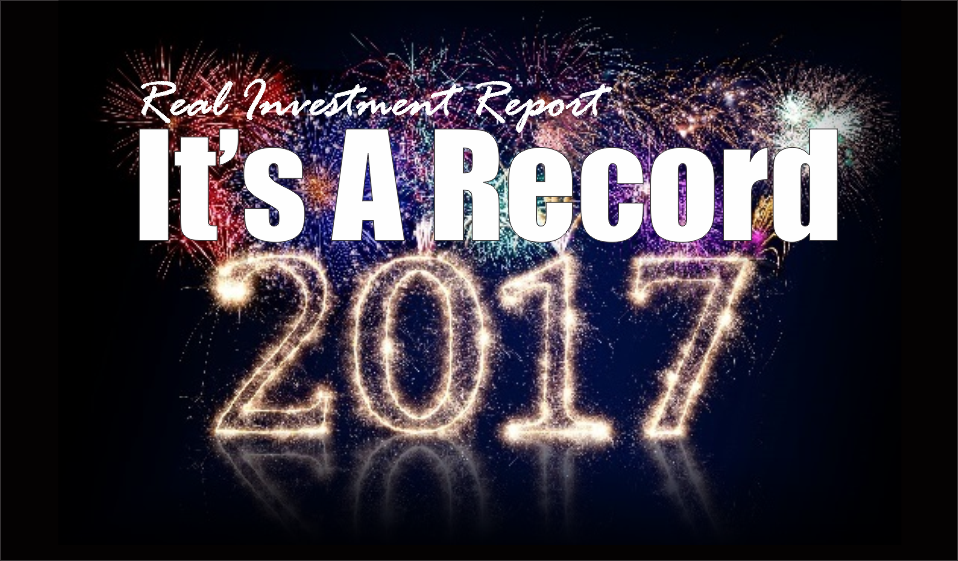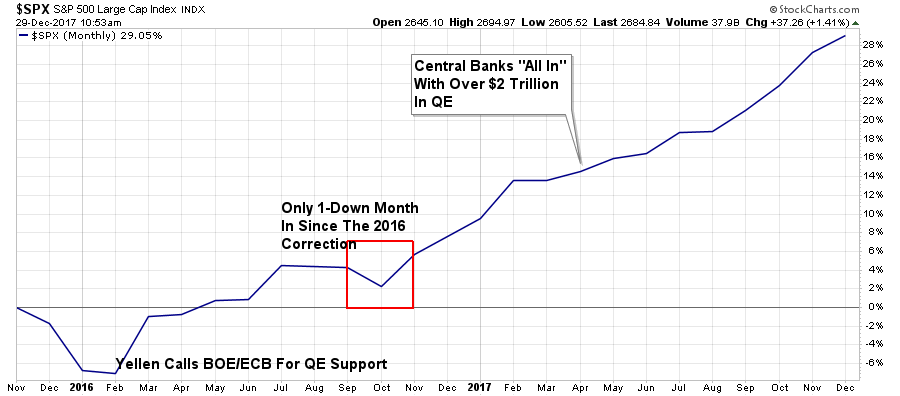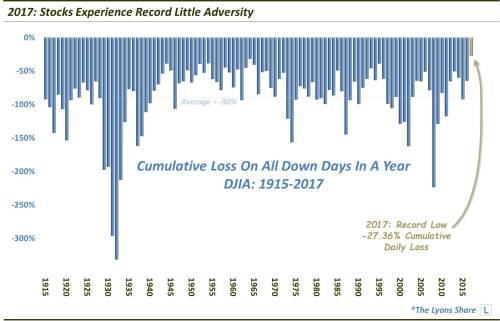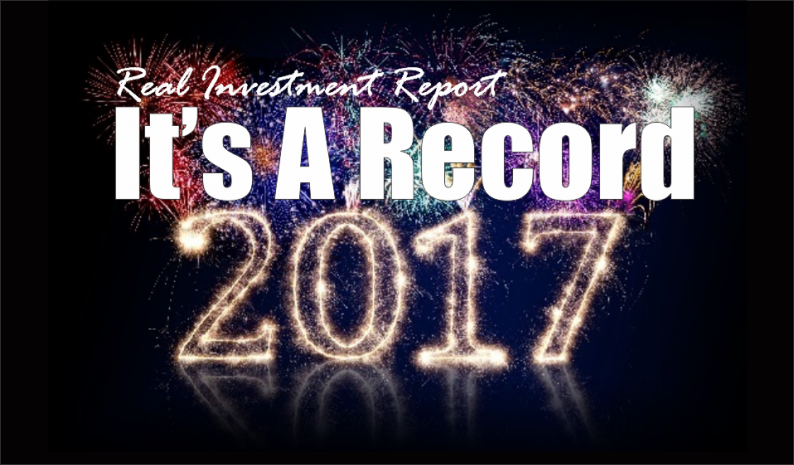
In just the past year, the markets set a record by going 12 straight months without a loss.

That liquidity driven surge was accompanied by extremely low volatility as noted last week by Dana Lyons:
“Specifically, the average daily closing price of the VIX in 2017 was 11.10 (through 12/26/17). That is the lowest of any year — by more than one and a half points — since the VIX inception in 1986 (by comparison, the ‘average yearly average’ is over 20).”

Of course, with very little volatility, there were very few draw downs along the way as markets continued their advance higher.
“Accordingly, we took a look at the amount of losses incurred by the stock market during the year as a measure of adversity faced along the way to its solid full-year gains. Specifically, we tabulated the amount of losses incurred during every down day in the market. We used the Dow Jones Industrial Average (DJIA) as it has a longer history than the S&P 500. And based on these calculations, the stock market enjoyed less adversity in 2017 than any other year in history going back over 100 years (our daily DJIA data begins in 1915).”

Not surprisingly, with record low volatility, few losses and a flood of liquidity being pumped into the financial markets – the “bears” finally threw in the towel and capitulated as noted by Sven Henrich(@NorthmanTrader)
“Rydex Bull/Bear ratio at 0.041 the lowest on record. Never have people been more long markets than now.”

Indeed.
2017 was a record year which tied the 1990’s bull market for the most number of consecutive up years in a row as shown in the chart below.

All that exuberance has got Wall Street already prognosticating that next year could be as good, or better, than 2017.
“‘I would expect 2018 to be an almost repeat of 2017,’ said Saut, chief investment strategist at Raymond James. ‘People are still way underinvested. Earnings are starting to come in better than expected. And with the tax reform, and especially the corporate tax cuts, I think earnings are going to continue to surprise on the upside. The professional investors are all in for the most part but the individual investor is not all in.’”













Leave A Comment